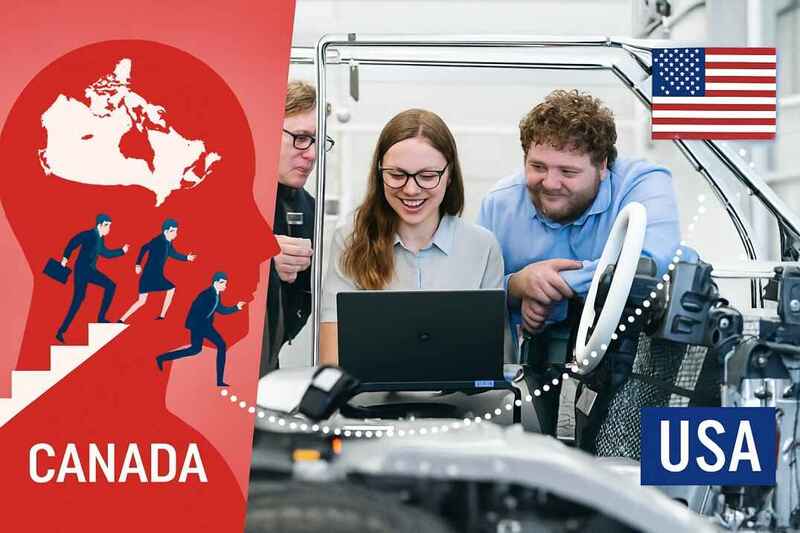 Nvidia Investment in AI. Photo Credits: Mariiaa Shalabaieva Via Unsplush/Pixabay
Nvidia Investment in AI. Photo Credits: Mariiaa Shalabaieva Via Unsplush/Pixabay
Nvidia’s $500 Billion U.S. Bet In Ai : Business Strategy Meets Tech Nationalism
NorthAmerica
Business
In April 2025, Nvidia announced a staggering investment of up to $500 billion over four years to build AI supercomputers and infrastructure within the United States. Collaborating with manufacturing partners like Foxconn and Wistron in Arizona and Texas, the move signals not only corporate ambition but a deep political alignment with U.S. strategic objectives.
Strategic Vision or Political Necessity?
On the surface, this appears to be a bold business move aimed at capitalizing on the explosive demand for artificial intelligence. But a closer look reveals Nvidia is not just navigating market forces—it’s responding to growing geopolitical pressure and a bifurcated tech ecosystem.
The timing is telling. Nvidia’s pivot comes amid tightening U.S. export controls to China, including restrictions on its advanced H20 chip. According to Reuters, the company stands to lose up to $5.5 billion in Chinese revenue in 2025 alone—roughly 20% of its data center sales.
Rather than chase uncertain access in politically sensitive regions, Nvidia is doubling down on a market where policy and business interests increasingly intersect. But it’s not without cost. Domestic infrastructure development comes with higher labor and regulatory expenses, logistical complexities, and long-term exposure to political shifts. As tech analyst Patrick Moorhead notes, “You don’t make a $500 billion bet without expecting the government to be your long-term partner” (Forbes, 2025).
Government Strategy in Corporate Clothing
U.S. political leaders across the aisle—whether Biden or Trump—have supported an aggressive protectionist stance on critical technologies. The CHIPS and Science Act, combined with a proposed 145% tariff on Chinese goods underscores a bipartisan strategy to reshore supply chains and outpace China in AI innovation.
In this context, Nvidia’s investment looks less like a strategic option and more like a precondition for continued relevance. The reward? Preferential access to federal contracts, defense partnerships, and potential subsidies. Companies seen as aligned with national priorities are often first in line for both financial support and public goodwill.
But not everyone views this entanglement positively. Critics argue that a tight fusion between state policy and corporate agendas risks distorting innovation and fragmenting global tech cooperation. “The tech Cold War is becoming a reality,” says Samm Sacks, a senior fellow at Yale Law School’s Paul Tsai China Center. Such scenarios result in entities like Nvidia choosing a side which is often at the cost of global competitiveness.
Risk or Reward?
The potential upside is enormous. If Nvidia becomes the go-to partner for U.S. AI infrastructure, its early investment could cement its leadership for decades. But it’s also a high-risk bet. Should political tides shift or international tensions ease, Nvidia may find itself overcommitted in a domestic market that no longer delivers high returns.
Moreover, this hyper-focus on U.S. expansion could limit Nvidia’s ability to compete in emerging AI markets like India, Southeast Asia, and Africa, where demand is rapidly accelerating. By contrast, rivals like AMD and Intel are hedging their strategies, keeping diversified production footprints in Europe and Asia while pursuing selective domestic growth.
The Bigger Picture
What Nvidia’s investment ultimately represents is not just corporate foresight—it reflects a broader era of tech nationalism. Governments are no longer passive observers of innovation; they are funders, regulators, and strategic partners. In this environment, corporate survival means mastering both code and diplomacy.
Nvidia’s $500 billion gamble might be the blueprint for the future of American tech leadership—or a case study in overreach. The outcome will hinge on how well its business calculus aligns with shifting political realities in the years ahead.
Strategic Vision or Political Necessity?
On the surface, this appears to be a bold business move aimed at capitalizing on the explosive demand for artificial intelligence. But a closer look reveals Nvidia is not just navigating market forces—it’s responding to growing geopolitical pressure and a bifurcated tech ecosystem.
The timing is telling. Nvidia’s pivot comes amid tightening U.S. export controls to China, including restrictions on its advanced H20 chip. According to Reuters, the company stands to lose up to $5.5 billion in Chinese revenue in 2025 alone—roughly 20% of its data center sales.
Rather than chase uncertain access in politically sensitive regions, Nvidia is doubling down on a market where policy and business interests increasingly intersect. But it’s not without cost. Domestic infrastructure development comes with higher labor and regulatory expenses, logistical complexities, and long-term exposure to political shifts. As tech analyst Patrick Moorhead notes, “You don’t make a $500 billion bet without expecting the government to be your long-term partner” (Forbes, 2025).
Government Strategy in Corporate Clothing
U.S. political leaders across the aisle—whether Biden or Trump—have supported an aggressive protectionist stance on critical technologies. The CHIPS and Science Act, combined with a proposed 145% tariff on Chinese goods underscores a bipartisan strategy to reshore supply chains and outpace China in AI innovation.
In this context, Nvidia’s investment looks less like a strategic option and more like a precondition for continued relevance. The reward? Preferential access to federal contracts, defense partnerships, and potential subsidies. Companies seen as aligned with national priorities are often first in line for both financial support and public goodwill.
But not everyone views this entanglement positively. Critics argue that a tight fusion between state policy and corporate agendas risks distorting innovation and fragmenting global tech cooperation. “The tech Cold War is becoming a reality,” says Samm Sacks, a senior fellow at Yale Law School’s Paul Tsai China Center. Such scenarios result in entities like Nvidia choosing a side which is often at the cost of global competitiveness.
Risk or Reward?
The potential upside is enormous. If Nvidia becomes the go-to partner for U.S. AI infrastructure, its early investment could cement its leadership for decades. But it’s also a high-risk bet. Should political tides shift or international tensions ease, Nvidia may find itself overcommitted in a domestic market that no longer delivers high returns.
Moreover, this hyper-focus on U.S. expansion could limit Nvidia’s ability to compete in emerging AI markets like India, Southeast Asia, and Africa, where demand is rapidly accelerating. By contrast, rivals like AMD and Intel are hedging their strategies, keeping diversified production footprints in Europe and Asia while pursuing selective domestic growth.
The Bigger Picture
What Nvidia’s investment ultimately represents is not just corporate foresight—it reflects a broader era of tech nationalism. Governments are no longer passive observers of innovation; they are funders, regulators, and strategic partners. In this environment, corporate survival means mastering both code and diplomacy.
Nvidia’s $500 billion gamble might be the blueprint for the future of American tech leadership—or a case study in overreach. The outcome will hinge on how well its business calculus aligns with shifting political realities in the years ahead.
Senior Editor: Kenneth Njoroge
Financial Expert/Bsc. Commerce/CPA


